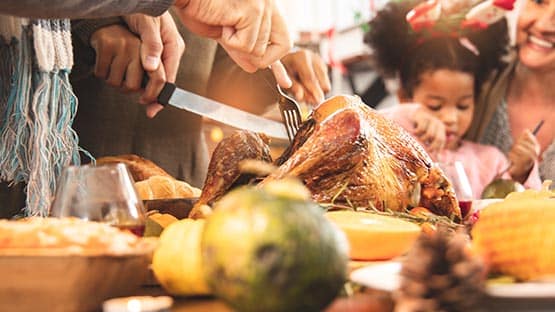
Families can expect plenty of Thanksgiving turkeys to go around this holiday season and at a more affordable cost than last year’s record-breaking prices.
The average cost of an 8- to 16-pound turkey typically served for Thanksgiving was $1.27 per pound in August 2023 – 22 percent lower than the same time last year, according to the latest American Farm Bureau Federation Market Intel report.
AFBF economists predict that purchasing a turkey could be even less expensive this Thanksgiving, thanks to a drop in highly pathogenic avian influenza cases and recovery of the U.S. turkey population.
“A robust turkey population is good news for farmers and families across the country,” said AFBF President Zippy Duvall. “The resilience of our food supply is an example of the strength of American agriculture, which is helped in part by the farm bill. We urge Congress to focus on passing the farm bill by the end of the year to ensure farmers can continue to put food on the tables of America’s families.”
Prices for the holiday bird soared during last year’s avian influenza outbreaks, driving the retail price for fresh boneless, skinless turkey breast to $6.70 per pound in September 2022 – 112 percent higher than the same time in 2021.
“The number of test-positive commercial turkey flocks in the U.S. has stabilized considerably,” said Tony Banks, senior assistant director of agriculture, development and innovation for Virginia Farm Bureau Federation.
HPAI reached North America in February 2022 after circulating in Europe as early as 2021. At the outbreak’s peak in March 2022, it affected 20.96 million birds, but detections gradually fell to just 540 birds in September 2023.
It took almost a full year for HPAI to reach any commercial flocks in Virginia, and the first reported in January 2023 were limited to a couple.
“This particular strain of avian flu is anticipated to be persistent in North America for three years or so,” said Banks. While cases are predicted to pick up again next year, they likely will be “fewer and farther between.”
Migratory birds are a major carrier of the virus, which means spring and fall migration are high-risk times. This season’s first test-positive commercial flocks were reported in South Dakota and Utah in early October.
“But most of the turkeys that are being harvested for Thanksgiving have already been processed, so we shouldn’t see any significant price impact from any incidents or test-positive flocks that occur between now and Thanksgiving,” Banks continued.
While retail prices for turkeys fluctuate, prices should improve for consumers with “plenty of turkeys available this year,” according to Hobey Bauhan, president of the Virginia Poultry Federation.
“We always encourage people to plan early for their Thanksgiving celebration,” Bauhan said. “You can buy a frozen turkey now and put it in your freezer if you have room. There’s really no difference in quality.”










